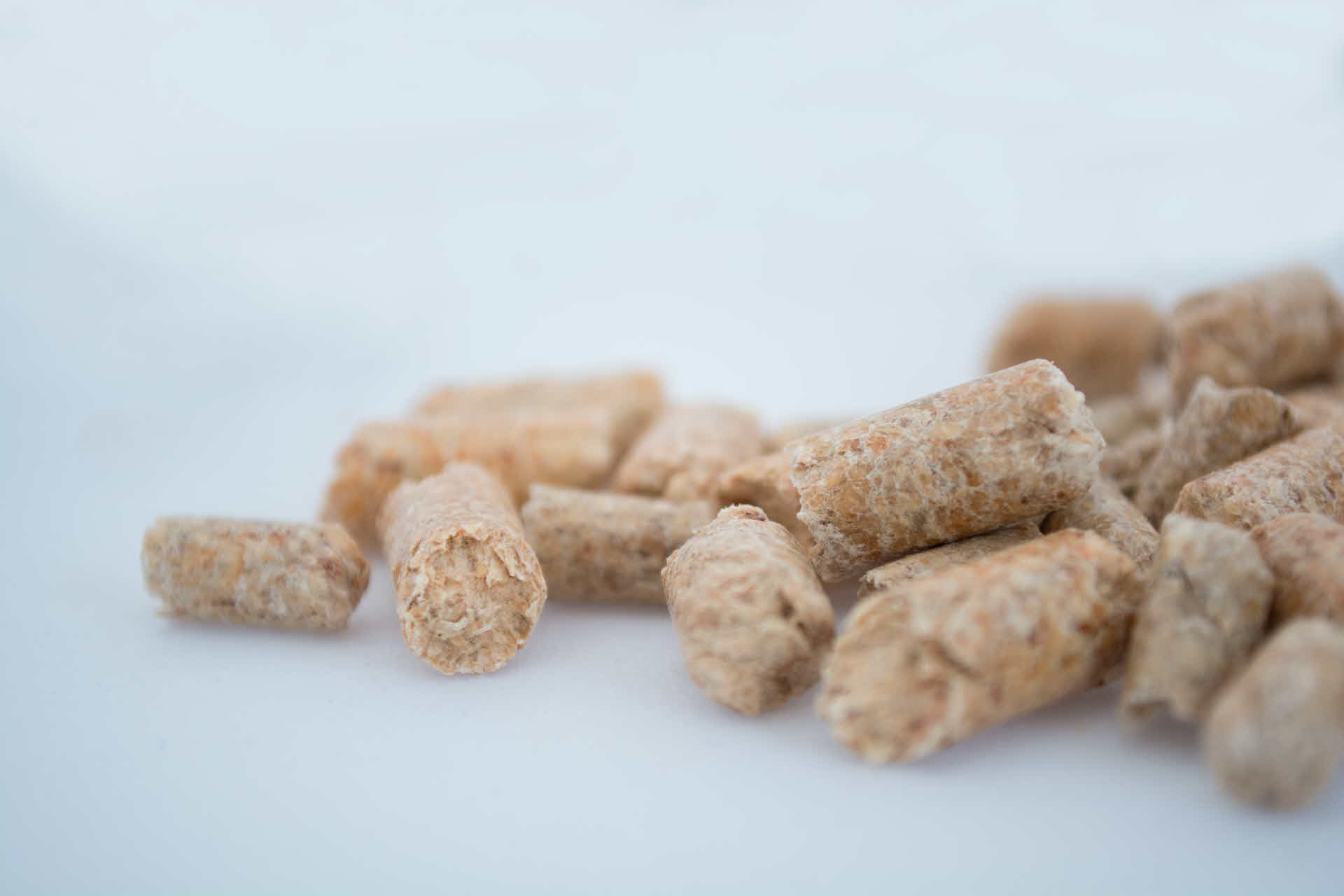
Pellet production at SCA Bionorr heated 60 000 homes
- News
- Renewable Energy
2024 was a record year for pellet production at SCAs unit Bionorr in Härnösand. By using sawdust, a by-product from SCA’s sawmills, Bionorr has produced a renewable fuel with high energy value, enough to heat 57800 homes for a year. Additionally, the residual heat from the manufacturing process contributed energy to the district heating network in Härnösand, equivalent to heating 2600 homes.
When timber is sawn into lumber, by-products such as sawdust and wood shavings are collected. These are dried, ground, and pressed into pellets – a domestic and renewable fuel with high energy value. As little as 10 liters of pellets can provide nearly 7 hours of heat from a pellet stove. Pellets not only contribute to energy-efficient heating but also reduce fossil emissions when replacing oil or electricity from fossil sources.

In 2024, 176,979 tons of pellets were produced at Bionorr, an increase compared to the previous record year of 2018, equivalent to heating an additional 223 homes. The production manager at SCA Bionorr, Per-Arne Persson, highlights the team’s efforts as the key to success:
“Our excellent production is the result of classic teamwork, where we have successfully managed production limitations, optimized raw material flows, and planned maintenance,” he says.
The residual heat generated during pellet production is delivered to the nearby district heating plant, Hemab. In 2024, 39 GWh of residual heat was delivered, which helped heat an additional 2,600 homes in Härnösand via the district heating network.
SCA sells pellets from several facilities, including those in Härnösand, Stugun, Tunadal, and Rundvik, as well as from a partially owned unit in Luleå and Moelven’s facilities in Sokna and Karlskoga. Together, these facilities have a production capacity of 500,000 tons of pellets per year, a volume that heats approximately 160,000 homes for a year.
For every ton of pellets that replaces oil, fossil emissions are reduced by more than a ton of carbon dioxide. This makes pellet an important tool in the transition to climate-neutral energy supply, with the potential to displace half a million tons of fossil carbon dioxide emissions – and that’s just with the pellet volume SCA delivers.
Photo: Erika Edmark, SCA